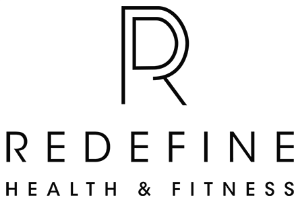WHY A STANDING DESK MAY NOT BE THE ANSWER FOR YOUR DESK JOB
Alternatives to a traditional sitting desk have been increasingly popular over the past few years. As the amount of time spent in an office increases and time spent being active decreases, desk related orthopedic conditions are becoming more common. Carpal tunnel syndrome, thoracic outlet syndrome, impingement tendonitis, and neck pain are just a few of the many conditions that sitting long hours at a desk contributes to. Desk workers and employers seek solutions to remedy the detriments of sitting, and standing desks are being issued routinely. While this may be a good solution for some, for many desk workers a standing desk will only change a person's orthopedic pain to a new area.
A large majority of desk based orthopedic conditions are caused by postural cross syndrome. As a person sits and views documents or a computer screen, it is a natural tendency to move the chin forward and round the shoulders. This position tightens the front of the chest (pectoralis minor) and the upper cervical spine (suboccipitals). It lengthens the reciprocal muscle groups, being the anterior neck (deep neck flexors) and midback (lower trapezius, middle trapezius, rhomboids). This muscle length and strength imbalance (postural cross) can be the root cause of above listed orthopedic issues.
What many don't understand, is that a similar cross syndrome can occur at the hips and lumbar spine when a person transitions to a standing desk. Standing all day requires abdominal and hip endurance based strength. Most people do not have the core stabilization required to keep proper lumbar spine alignment during standing for a full work day.
When a person transitions to a standing based desk and does not possess the required endurance to stand all day, to compensate, the pelvis will shift into an anterior tilt and excessive lumbar lordosis. This posture allows the person to rest on the anterior hip ligaments and posterior structures of the spine. Standing in this manner requires less strength than engaging the hips and abdominals all day. Over time, this pelvic position will cause muscle length restrictions at the front of the thigh (short hip flexors) and lower back (lumbar paraspinals/ quadratus lumborum). It causes strength impairments at the reciprocal muscle groups, being the abdominals and the gluteals.
Similar to postural cross syndrome from a sitting desk, the above pelvic position can contribute to a wide array of orthopedic conditions. These can include radiating lower back pain, sacroiliac joint dysfunction, and acceleration of lumbar spine degeneration. In addition, this strength and muscle imbalance at the hips and lower back will carry over into gait and precipitate conditions such as IT band syndrome, patellar femoral pain, Achilles tenodonitis, and plantar fasciitis.
Before transitioning to a standing desk, it is important to realize that a standing desk is not a quick fix to desk related pain. As many people lack the amount of strength required to safely stand all day, a consultation with a qualified fitness professional or a physical therapist may be beneficial when deciding which desk option to pursue. Other options to consider are desks that transition from sitting to standing so a desk user can alternate between the two positions. Kneeling desks are becoming more popular and while they too require a significant amount of abdominal stability to safely use them, a kneeling desk should also be considered. The treadmill desk is another good option that provides constant dynamic motion vs. the static position of a sitting and standing desk.
If you are considering a new type of desk, contact a health care professional to help you make the right decision for your body.
Carla Pryor PT, DPT, OCS, RYT 200. Co Owner of Redefine Health and Fitness located in North County San Diego. Redefine is a wellness based company focused on providing excellent comprehensive and research driven care to assist clients in meeting their fitness and nutrition goals. Contact carla@redefinehealthandfitness.com for further inquiry.

